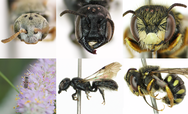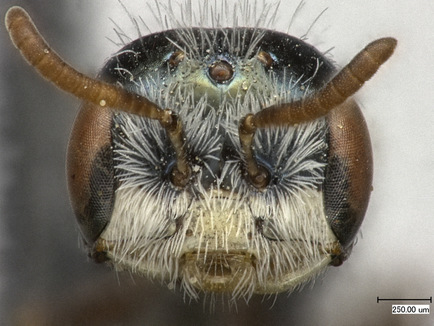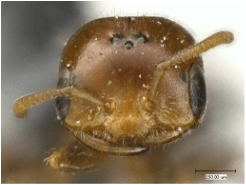The Science of Species
"Each species must be known by one name only, throughout the entire extent of its range. This systematic study is the foundation upon which all the other work of seemingly more practical importance is based."
- Theodore Bertis Mitchell, 1946 (see https://doi.org/10.1093/ae/tmw023 for background)
- Theodore Bertis Mitchell, 1946 (see https://doi.org/10.1093/ae/tmw023 for background)
|
The first step in understanding our environment is documenting and identifying the species that occupy it. Without an accurate picture of the species, it is impossible to communicate our findings to other scientists in a meaningful way.
My research focuses on the taxonomy, diversity, and natural history of bees. Currently I am working on the bees of Minnesota and the broader midwest. I am focusing on resolving thorny taxonomic questions, such as identifying and delineating difficult species-groups that occur in Minnesota. I am also working on identification resources that will open up accurate identifications to the broader scientific community |
Current Projects

The bees of Minnesota. I am currently working on compiling the definitive list of all the species that occur in Minnesota. Minnesota is a particularly interesting place in terms of bee diversity because the bee fauna is largely eastern but there are also a number of great plains and western bees that make it into the state. Since I've started, I've identified a number of new genus and species records. One of the most interesting is Neolarra vigilans, pictured at the top of this page.
Invasive and non-native bees. With an increasingly connected world, species are being introduced at an accelerating rate. It is important to keep track of adventive and invasive bees due to their potential negative effects on our native bees. I currently have a paper in press in the Great Lakes Entomologist documenting the spread of the adventive bee Pseudoanthidium nanum to Minnesota and Illinois. I expect to do more work in this areas as more bees spread to the midwest.
Nectar concentrating in bees. More info coming soon.
Invasive and non-native bees. With an increasingly connected world, species are being introduced at an accelerating rate. It is important to keep track of adventive and invasive bees due to their potential negative effects on our native bees. I currently have a paper in press in the Great Lakes Entomologist documenting the spread of the adventive bee Pseudoanthidium nanum to Minnesota and Illinois. I expect to do more work in this areas as more bees spread to the midwest.
Nectar concentrating in bees. More info coming soon.
Past Research
My PhD thesis largely focused on two main areas: the taxonomy and systematics of the bee tribe Perditini (Andrenidae) and the evolution of host plant use in bees. I also dabbled in behavior and conservation.



